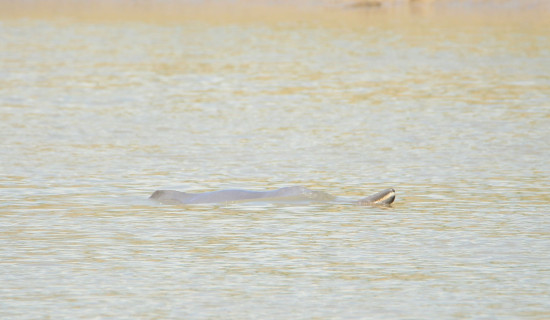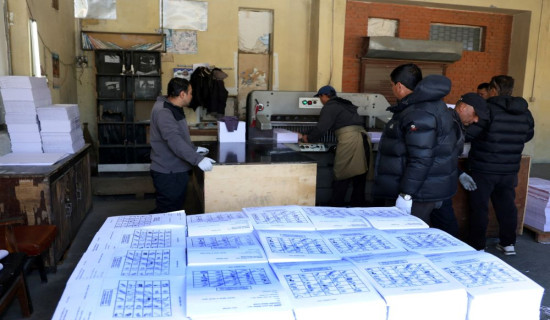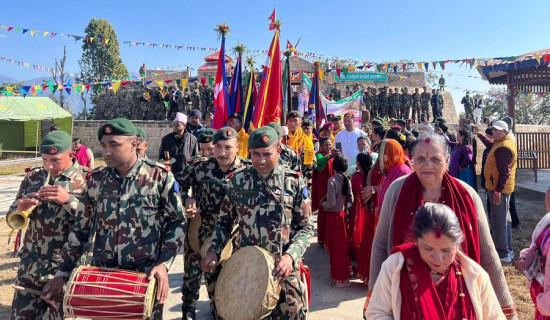- Friday, 9 January 2026
Need For Regional Climate Governance
In the early hours of July 8, Nepal woke up to devastation. Raging floodwaters surged down Nepal’s Bhotekoshi, Trishuli, and Narayani rivers, tearing through infrastructure, washing away vehicles, damaging hydropower plants and property worth millions. The flash flood claimed at least nine lives and left over two dozen people missing. The toll of the disaster stretches beyond human loss. It destroyed Nepal’s major national infrastructure, including the strategic Nepal-China Friendship Bridge that connects Nepal and China through trade, tourism and culture. The bridge, a vital trade link, was previously damaged by the 2015 earthquake and had only been built recently.
What makes this disaster more alarming is that its origin lies far beyond Nepal’s borders. According to initial assessments by Nepal’s Department of Hydrology and Meteorology, a sudden drainage of a supraglacial ice in the Tibetan region of China caused the flash flood in Nepal’s Rasuwa district. It is a warning that incidents such as climate change and environmental disasters can neither be constricted to national boundaries nor can they be managed without cross-border cooperation.
Loopholes in governance
The disaster that struck Nepal and many alike cannot be viewed in isolation, as they hint at broader regional climate vulnerabilities and loopholes in governance mechanisms. The disaster also reflects a deeper and growing crisis in the Himalayan region, where intensifying climate change, unequal power dynamics and weak regional climate governance are coming together to cause serious consequences on human lives and beyond.
Nepal remains one of the most climate-vulnerable nations, but it contributes almost nothing to global carbon emissions. In recent times, incidents such as swelling glacial lakes, erratic monsoon patterns and extreme weather conditions have become common in the ecologically fragile Himalayan region, thus intensifying the occurrence of climate-induced disasters. These environmental challenges have been made worse by the region’s weak climate governance mechanisms, which lack effective and efficient coordination and transparency among neighbouring states.
Nepal’s geographical location places it downstream of major river systems, which makes it more vulnerable to climate-induced disasters. Its northern neighbour, where the vast area of glacier-fed rivers lies, should share hydrological information on water flow, glacial lake melt and outburst, among others, so that Nepal can timely devise measures to mitigate and prevent potential disasters and early warning mechanisms. This pattern of asymmetrical power is not limited to Nepal’s northern neighbour alone. Nepal’s southern neighbour frequently releases dam water during monsoon season without adequate coordination or warning, leading to inundation of Nepal’s lowland Tarai region, damaging farmland and displacing thousands.
In both instances, Nepal finds itself caught between the decisions made by upstream powers beyond its borders, whose actions largely affect its response to climate change. It is distressing to note that as upstream nations control the flow of rivers and the information that predicts their rise, downstream countries like Nepal remain clueless about the impending disasters. With intensifying risk of climate change each year, Nepal’s vulnerability is compounded by this geopolitical asymmetry coupled with its limited climate diplomacy.
In an ecologically sensitive region like South Asia, the classification of climate-related information as a strategic asset rather than a public good amplifies its collective vulnerability. In the absence of formal mechanisms for sharing transboundary climate-related information, joint early warning systems and response mechanisms make the Himalayan region and its people more vulnerable. We cannot overlook the fact that a single environmental disaster can unleash a chain of reaction that could impact communities in the entire region.
This time it was Nepal, but a single rupture of a glacial lake in the Tibetan region can trigger destruction across much of South Asia. The climate crisis in the region is no longer just an issue of a threat to the environment; it endangers ecosystems, generates economic instability, disrupts political cohesion and regional peace. Climate-related disasters could also worsen the existing geopolitical inequalities and expose the fragility of current governance mechanisms if not managed well. Given this, addressing these challenges demands more than fragmented, nation-specific adaptation efforts.
Deep cooperation
It demands inclusive actions, planning and deep cooperation, something that transcends political sensitivities and puts human security at its core. It is high time that the way climate governance is practiced in the region is revisited. Before it is too late, countries across the region should come together to establish integrated climate risk frameworks that allow real-time data sharing, joint disaster preparedness and inclusive decision-making. Nepal’s disaster recovery must go beyond rebuilding and repairing damaged infrastructure to reassessing and strategically thinking about how it could better position itself diplomatically to engage with upstream and downstream neighbours to secure access to critical information timely.
And for the region, the floods in Nepal must serve as a warning of what the future holds if collective action is not taken. Placing climate recovery at the heart of our actions is laden with immense challenges, but there are also opportunities to build a new foundation of regional cohesion in the face of shared climate risks. This disaster should also inspire justice-centred climate strategy – the one that recognises the disproportionate vulnerabilities of countries like Nepal through fairness, accountability and collaboration.
(Bhatta is a freelance author. bhatta.meena@gmail.com)

















